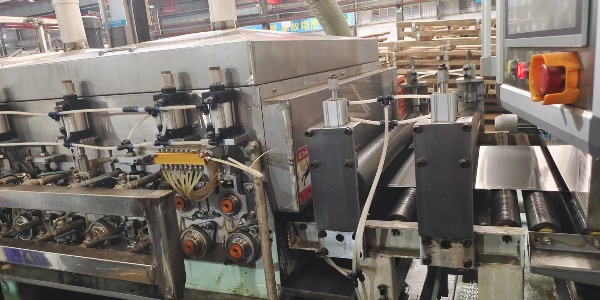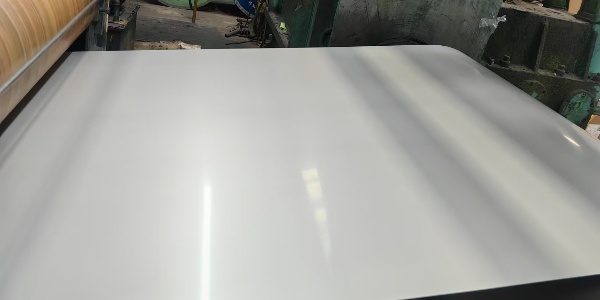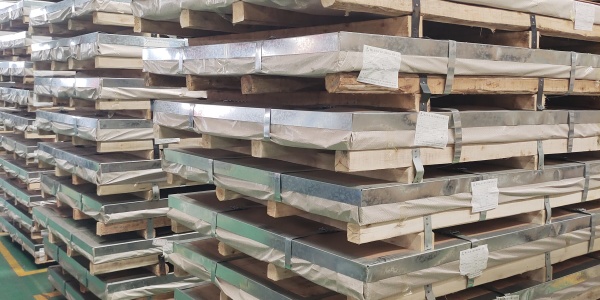Paslanmaz çelikİnşaattan otomotiv üretimine ve günlük ihtiyaçlara kadar çeşitli sektörlerde yaygın olarak kullanılan bir malzemedir. Ancak günlük hayatta gördüğümüz ürünler, paslanmaz çelik saclar, paslanmaz çelik rulolar, paslanmaz çelik kaplar vb. gibi bitmiş paslanmaz çelik ürünlerdir ve paslanmaz çelik malzemelerin oluşumu hakkında çok az şey biliyoruz. Bu blog, ağırlıklı olarak paslanmaz çeliğin çelik fabrikalarından piyasaya, kütüklerden paslanmaz çelik rulolara kadar uzanan bir dizi sürecini paylaşmaktadır.
1.Çelik Üretimi (Birincil Üretim)
- İşlenmemiş içerikler: İşlem, demir cevheri, hurda çelik ve ferroalaşımlar (krom ve nikel gibi alaşım elementleri sağlayan) gibi hammaddelerin eritilmesiyle başlar.
- Elektrik Ark Ocağı (EAF):Modern paslanmaz çelik üretiminin çoğu, hurda çeliğin elektrik enerjisi kullanılarak eritildiği Elektrik Ark Fırını kullanır. Bazı tesisler, birincil demir üretimi için yüksek fırın kullanıp daha sonra bu demiri rafine edebilir.
- Alaşımlama:Krom (%10-30), nikel (%8-10) ve molibden (gerekirse) gibi elementler, korozyon direnci, sağlamlık ve ısı direnci gibi özellikleri etkileyecek farklı paslanmaz çelik sınıfları oluşturmak için eklenir.
2.Döküm
- Sürekli Döküm:Erimiş metal, sürekli döküm makinesine dökülerek külçe veya levhalar halinde katılaştırılır. Bu işlem genellikle çeliğin şeklini (dikdörtgen, kare veya dairesel) oluşturan su soğutmalı kalıplar kullanılarak yapılır.
- Külçe Döküm:Bazı eski proseslerde hala külçe dökümü kullanılıyor; burada erimiş metal kalıplara dökülerek daha fazla işlem gerektiren büyük bloklar (külçeler) oluşturuluyor.
3.Sıcak Haddeleme (Tekrar Isıtma ve Haddeleme)
- Tekrar ısıtma:Çelik levhalar veya kütükler, dövülebilir hale getirilebilmeleri için yaklaşık 1.100-1.250°C (2.000-2.300°F) sıcaklığa kadar bir fırında yeniden ısıtılır.
- Yuvarlamak:Tekrar ısıtılan levhalar veya kütükler, kalınlıklarını azaltmak için bir dizi silindirden geçirilir. Bu işlem, sıcak haddelenmiş paslanmaz çelik rulolar oluşturur. Haddeleme işlemi aynı zamanda tane yapısını da iyileştirerek çeliğin mekanik özelliklerini iyileştirir.
- Kalınlık Kontrolü:Ruloların kalınlığı, istenilen özelliklere ulaşmak için silindirlerden geçerken kontrol edilir.
4. Turşulama ve Kireç Çözme
- Turşulama:Sıcak haddelemeden sonra, çelik yüzeyinde genellikle ısıl işlemden kaynaklanan bir tortu (oksitlenmiş malzeme) bulunur. Bu tortu, hidroklorik veya sülfürik asit karışımının kullanıldığı bir asit banyosunda giderilebilir.
- Kireç çözme:Bu adım, oksitleri yüzeyden uzaklaştırarak, son yüzeyin daha sonraki işlemler için pürüzsüz ve temiz olmasını sağlar.
5. Soğuk Haddeleme
- Soğuk Haddeleme:Bu adımda, sıcak haddelenmiş paslanmaz çelik, kalınlığını daha da azaltmak ve istenen son ölçüye ulaşmak için oda sıcaklığında silindirlerden geçirilir. Soğuk haddeleme, çeliğin sertliği, mukavemeti ve yüzey kalitesi de dahil olmak üzere mekanik özelliklerini iyileştirir.
- Tavlama:Soğuk haddelemeden sonra çelik, gerilimleri azaltmak ve sünekliği artırmak için tavlanır (ısıtılır ve sonra soğutulur), bu da istenen mekanik özelliklerinin korunmasına yardımcı olur.
6.Yüzey İşlemleri
Parlatma/Fırçalama:Paslanmaz çelik bobinler, istenen yüzey kalitesini elde etmek için cilalama, fırçalama veya kaplama gibi çeşitli yüzey işlemlerinden geçirilebilir. Yaygın yüzey işlemleri şunlardır:
- 2B Bitiş:Pürüzsüz ama parlak olmayan standart bir değirmen yüzeyi.
- 4 Numaralı Bitiş:Genellikle mimari uygulamalarda kullanılan fırçalanmış veya saten bir yüzeydir.
- Ayna Parlaklığı:Son derece cilalı, yansıtıcı yüzey.
7. Sarma ve Kesme
- Sarma:Son ürün, sevkiyata veya ileri işlemlere hazır hale gelen bobinlere sarılır. Bobinler, birkaç yüz pounddan binlerce pounda kadar değişen çeşitli ağırlıklarda olabilir.
- Kesme:Gerekirse, bobinler özel kesme ekipmanları kullanılarak daha dar genişliklerde kesilir. Bu kesilmiş bobinler daha sonra daha küçük, daha kolay yönetilebilir rulolar veya levhalar halinde satılabilir.
8. Son Muayene ve Paketleme
- Denetleme:Bobinler, gerekli standartları karşıladıklarından emin olmak için fiziksel, mekanik ve kimyasal özellikler açısından titiz testlerden geçirilir. Yaygın testler arasında yüzey muayenesi, çekme dayanımı ve korozyon direnci testleri yer alır.
- Ambalajlama:Bobinler tamamlandıktan ve kontrol edildikten sonra, nakliye sırasında hasar görmemesi için dikkatlice paketlenir. Paketleme genellikle koruyucu kaplamalar, etiketleme ve bazen de ihracat için ahşap kasa gibi ek işlemler içerir.
Sonuç olarak, dönüşümünpaslanmaz çelik ham bobinlerDeğirmenden bitmiş ürüne kadar geçen süreç, özelliklerini ve kullanılabilirliğini artıran bir dizi titiz süreci içerir. Bu yolculuk, paslanmaz çeliğin modern üretimdeki önemini vurgulamakla kalmaz, aynı zamanda yüksek kaliteli paslanmaz çelik ürünlerin üretimindeki karmaşık işçiliğin de altını çizer.
Gönderi zamanı: 09-Oca-2025



















